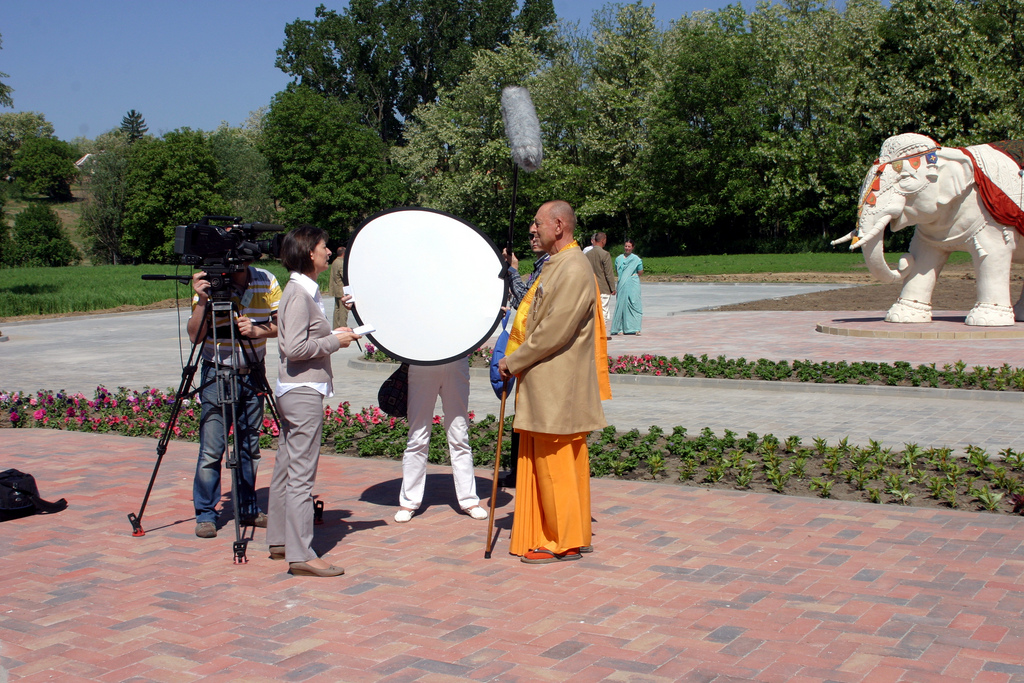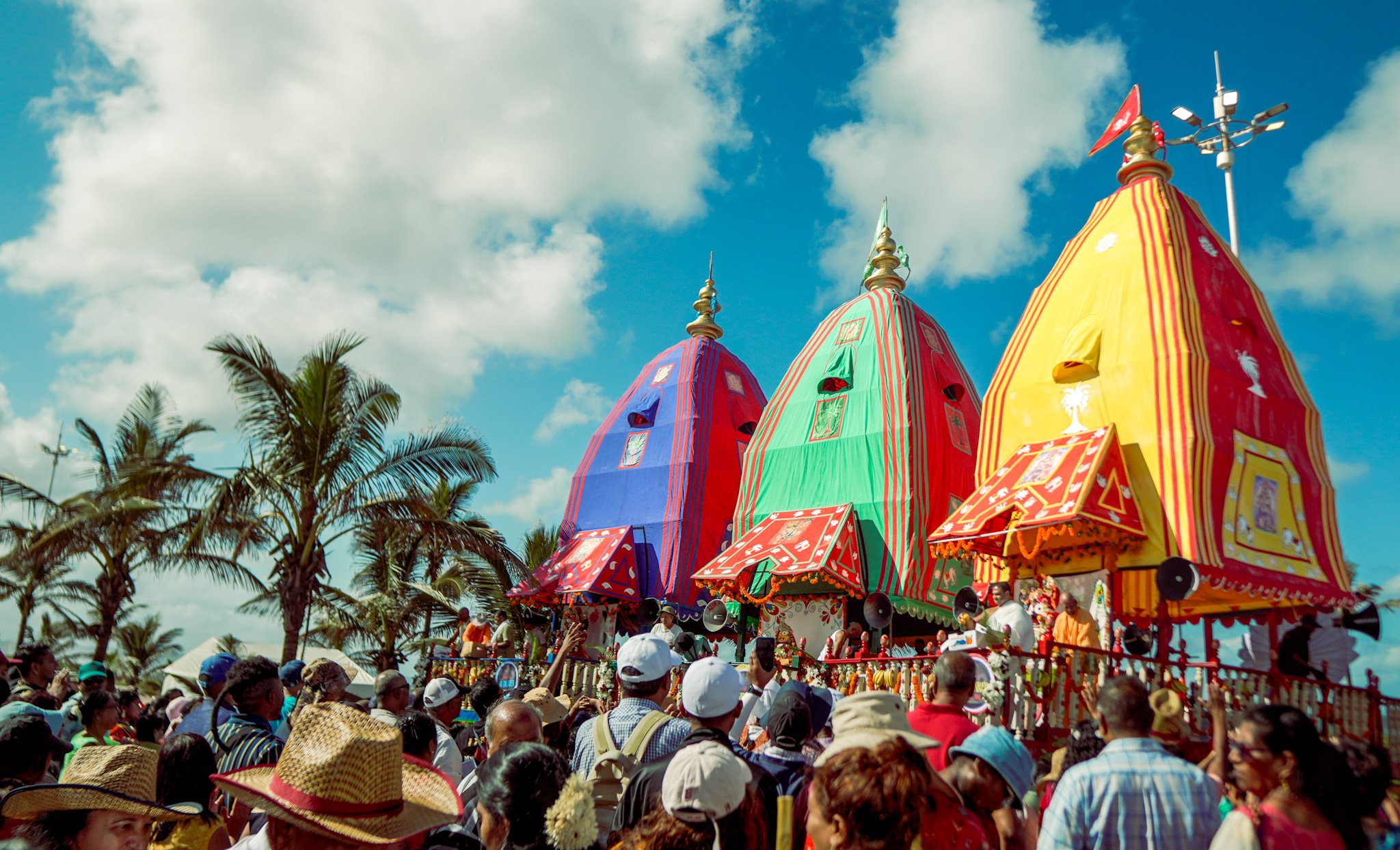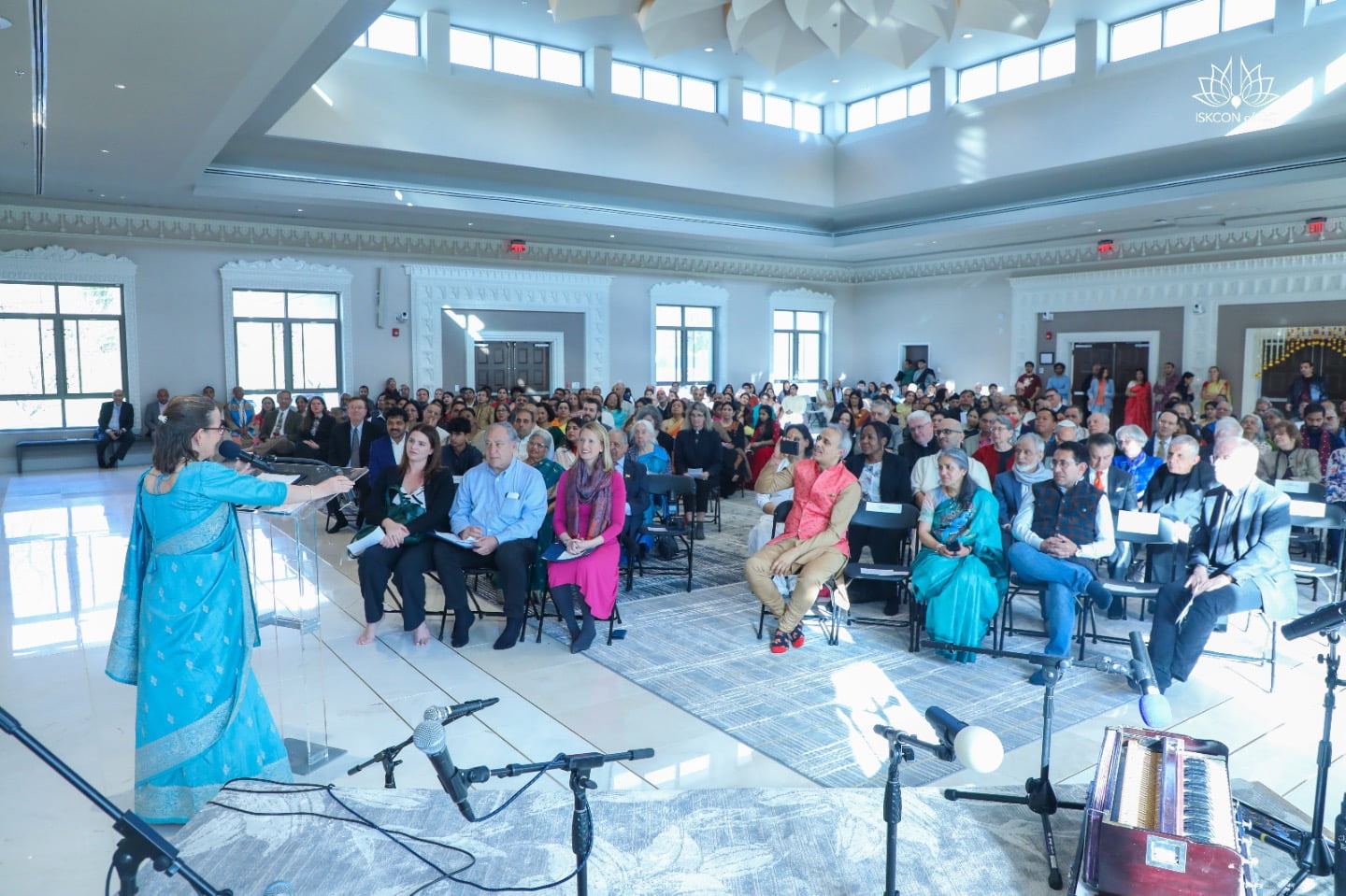Hungary’s Krishna Valley Celebrates Twenty Years
By Madhava Smullen | Jun 01, 2013

Krishna Valley, ISKCON Hungary’s 660-acre sustainable farm, celebrated twenty years on May 15th, with a special program and the official opening of its new reception building.
One hundred specially invited guests attended the event, which ran from 10:30am until 2:00pm.
VIPs included Hungarian State Secretary of Religious Affairs Gyorgy Holvenyi; Indian Ambassador Gauri Shankar Gupta ; Deputy State Secretary of Tourism Dr Viktoria Horvath; Member of Parliament Balazs Bus; local District Head Dr Szabina Nagy; and the head of the local Agriculture and Rural Development Agency, Peter Szabolcs Toth.
Also attending the event were many leaders of ISKCON Hungary, as well as members of the general public who gave their support to Krishna Valley over the years in a number of ways. These included major donors, media supporters, and those who helped with the construction and other elements of the community’s development.

The new reception building
The event began with a bhajan, followed by some short speeches. Next, State Secretary of Religious Affairs Gyorgy Holvenyi and Indian Ambassador Gauri Shankar Gupta, along with ISKCON Hungary leader Sivarama Swami, cut the ceremonial ribbon to open the new reception building.
Krishna Valley received a grant for the handsome brick and wood building last year. Beautifully heralding the entrance to Krishna Valley, it is guarded by two stone white elephants, and provides information, restroom facilities, and a showroom featuring a variety of natural products made by the community.

Natural community-made products on display in the reception building
After cutting the ribbon, guests walked a new themed path showing Krishna Valley’s ecological way of living, which was also made possible by the recent grant. Along the way they saw different elements of the community’s sustainable way of life, illustrated by several large informational display boards.
“The first stop shows our water and waste water management,” says Krishna Valley Temple Director Radha Krishna Das. “The second is renewable energies. The third is cow protection and working with oxen. The fourth is sustainable agriculture. The fifth is gardening and organic gardening. And the sixth is fruit.”

Sivarama Swami, the Indian Ambassador and the State Secretary of Religious Affairs cut the ceremonial ribbon
At the end of the themed path, guests reached the temple, where they attended a cultural show. The show included a presentation on twenty years of Krishna Valley, a mridanga show by community children, and speeches by the State Secretary of Religious Affairs and the Indian Ambassador.
“The Ambassador spoke about the importance of understanding the first mantra of Sri Ispanisad, that we should use everything in God’s service,” says Radha Krishna. “If we misuse things, then there will only be a shortage of resources. And we should understand that we are part of nature, not above it. It was a really nice speech.”

Guests walk the themed path on ecological living
All the guests then tucked into a delicious prasadam lunch. Upon leaving, they received gift bags with a magazine and several natural community-made products such as cheese, oils, and cosmetics.
The event was widely covered by the media, with online coverage as well as four TV channels including Magyar Televízió, Hungary’s national broadcaster. Next week, Magyar will feature an eighteen-minute program covering the event and looking back on Krishna Valley’s history.
It’s been quite an eventful twenty years.
Established in 1993 by Sivarama Swami, the community started out with around 300 acres—less than half the current size—and only four or five devotees living on site.

Radha Krishna Das speaks to the visitors on renewable energies
“There was nothing on the farm,” says Radha Krishna. “No buildings, no trees, no gardens. Just one dilapidated barn on an old sheep run.”
But more devotees began moving to the community, and with a few months, around forty were living in the local village of Somogyvamos.
Meanwhile, in Krishna Valley itself, simultaneous construction on a temple, residential ashrams, and family homes began in 1994.
With the center for higher thinking—the temple—being built, it was also time to focus on ISKCON Founder Srila Prabhupada’s other mandate for rural communities—simple living.

Along the ecological living themed path, guests saw Krishna Valley’s cow protection program
“Right from the beginning, we wanted to do agriculture,” Radha Krishna says. “But most of the devotees were city people. We needed help. Fortunately, the villagers here were very happy to help us. They taught us how to cultivate the land, how to work with horses, and how to milk the cows. Gradually, devotees who were more experienced, including agricultural engineers and economists, moved to Krishna Valley. And after some early struggles, things began developing nicely.”
Today, Krishna Valley is a large, thriving community, and the most successful ISKCON farm in Europe. 140 devotees live there, with another eighty residing in nearby Somogyvamos. The community is fully self-sufficient in vegetables and fruits, and produces ten times more grain and seven times more honey than it needs. Devotees have planted 380,000 trees, and have eleven hectares of botanic garden.

Guests were shown Krishna Valley’s organic gardening
Krishna Valley also has its own waste water management system, solar panels that cover 70% of its electricity needs, and solar heater pipes that cover 60% of its hot water needs.
“Socially speaking, we have good relationships with the neighboring village and the media, and very good connections with the local government,” says Radha Krishna, who was elected to the local Mayor’s Council in 2010. “And we are the largest employers in the local area. We also have a really good and cooperative community, with a counselor system in which around 160 devotees participate.”
Krishna Valley also attracts thousands of tourists every year, for whom the new reception building will provide a warm welcome, information, and orientation.
With the reception and ecological themed path now open, Krishna Valley will continue to celebrate its twentieth anniversary throughout the rest of the year with a series of different events.

The distinguished guest gather in the temple for a cultural show
A few days before Sri Krishna Janmastami (August 28th), a special festival will be held for devotees only.
“We will invite all the devotees who have lived in Krishna Valley and participated in developing it,” Radha Krishna says. “We will thank everyone for all their help, and give them gifts that we prepared for them.”
In the fall, meanwhile, all the villagers from Somogyvamos will be invited to Krishna Valley for a celebration. Transport will be provided so that even the elderly and infirm can attend, and all will take a tour of the community and visit the temple to see Sri Sri Radha Shyamasundara.
Throughout the rest of the year, there will be a series of eight different harvest festivals for the general public.

Krishna Valley children perform a mridanga show for the visitors
The series began in early May, with a flower festival. Three hundred tourists viewed a one-and-a-half-hour documentary film about Krishna Valley, took a tour, and
viewed Sri Sri Radha Shyamasundara’s altar, which was beautifully decorated with vast quantities of flowers.
The remaining harvest festivals will have a similar structure and be themed around harvests such as walnut, cucumber, peach, and apple.
In addition, throughout the year, veteran devotees who have lived and served at Krishna Valley for more than fifteen years will give a class every Tuesday morning, sharing their memories of the community’s early days and development.
And as for the next twenty years?
“The vision is to strengthen the community, strengthen education, and raise the next generation in Krishna consciousness,” says Radha Krishna.












